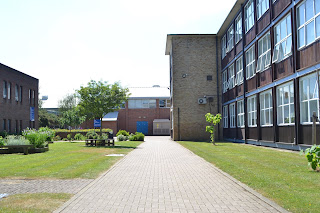A camera lens is composed of multiple lens elements assembled and fitted together in a tube called a lens barrel.
A camera lens may be designed as prime or zoom.
PRIME - has a fixed focal length that does not change. They are also generally higher quality than zoom.
ZOOM - most cameras are supplied with a zoom lens allowing the user to switch from wide angle shots though to telephoto. Zoom lens' are highly flexible, however certain photographers will purchase specific lens for dedicated purposes.
Focal length - its defined as the distance in mm from the optical centre of the lens to the focal point, which is located on the sensor.
The most important factor in any camera lens is its focal length. This determines which type of lens it is, and what subjects it will be able to photograph. Focal lengths range from just a few mm up to over a m , and can be loosely grouped as follows:
Field of view ( FOV ) - determined by the angle of view from the lens out to the scene and can be measured horizontally or vertically. Its associated with focal length, usually based on the 35mm film photography, given popularity of the format over others.
Larger sensors or films have wider FOVs and can capture more of the scene.
In 35mm photography, lenses with a focal
length of 50mm are called "normal" because they work without reducing or
magnifying and creates images the way we see the scene with our naked eyes
(same picture angle of 46°).
Types of lenses
Zoom lenses - A lens allowing a camera to change smoothly from a long shot to a close-up or vice versa by varying the focal length.
Wide angle lenses - ( short focal length ) capture more because they have a wider picture angle, broader field of view than the human eye. A wide-angle lens deepens space; it makes everything seem further away from the camera. It also deepens or increases depth of fields.
Telephoto lenses - ( long focal length ) have a narrower picture angle. This is associated with larger magnification of distant objects. They magnify the images by 'pulling' them closer to you. As a result they also magnify vibrations from your trembling hand and when pressing the shutter and this can result in blur or fuzzy pictures. Also is good for blurring backgrounds with a low F Stop.
Typical focal lengths and their 35mm format designations
< 20mm -- Super Wide Angle
24mm - 35mm -- Wide Angle
50mm -- Normal Lens
80mm - 300mm -- Tele
> 300mm -- Super Tele
Focal length experiment
Need an outdoor location, using the zoom lens, ensure that there is a foreground, mid ground and background.
How to do the experiment
1. Using a tripod photograph the same scene at the different telephoto settings on your lens
2. Record these settings
3. Make sure to observe whether there is any distortion at smaller focal lengths ( 18 mm ) compared to long focal length ( 55 mm )
Example
Outdoor landscape changes
- standing in one place and using the zoom on the camera.
Camera Settings
ISO - 200
F stop 8
Shutter Speed 1 / 125
55 mm
45 mm
35 mm
24 mm
18 mm
Facial distortion photos- moving to frame the photo the same every time.
Camera Settings
ISO - 200
F stop 5.6
Shutter Speed 1 /125
55 mm
45 mm
35 mm
24 mm
18 mm
Analysis
For where i stood still and used the zoom lens to zoom out of the photo. The technique worked really well there is a obvious change in the landscape allowing more to be seen. The Tripod i used stopped camera shake and there is no movement other than the different change in stages.
In the series where i moved to keep the frame the same the distortion worked well. There is a clear difference in the shape of the face shown between the 55mm and the 18mm. In the background of the 55mm it is also blurred which is as expected and its not distorted. Where as in the 18mm the background is in focus but there is distortion in the face making it rounder.
In my project i will use the knowledge of the technique in my work to stop distortion if i wanted to. As well as this i may use the telephoto lens in order to blur a background if i wanted to.





















No comments:
Post a Comment